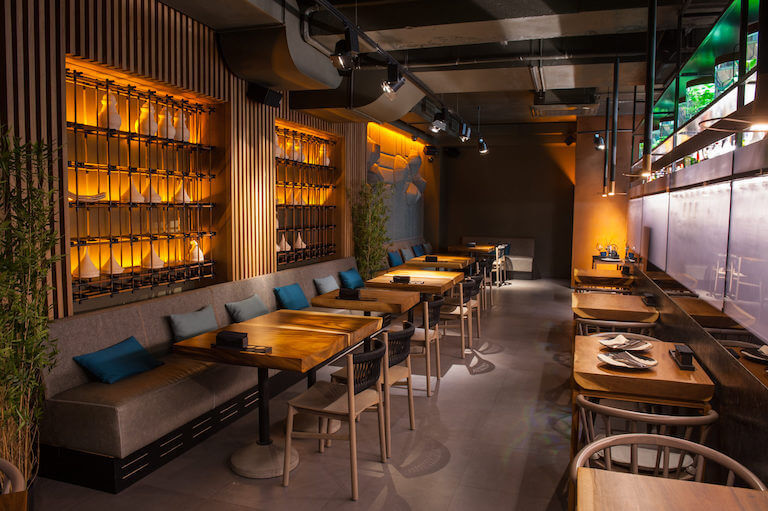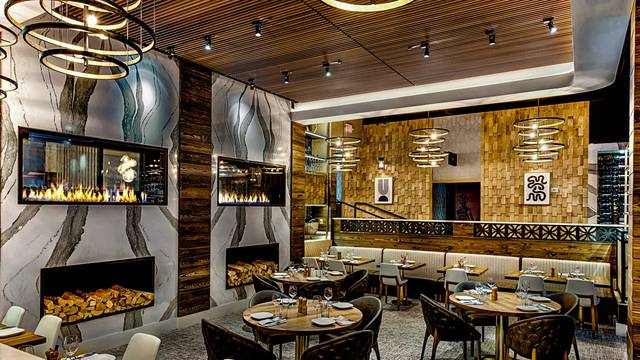Savor Authentic Oriental Food With a Pan-Asian Twist for a Culinary Experience
Starting a culinary trip through genuine Eastern cuisine, improved with a Pan-Asian spin, uses a special possibility to explore the rich tapestry of tastes that specify the area's varied cooking customs. This experience welcomes you to enjoy the exquisite balance of preferences-- sweet, salty, spicy, and sour-- balanced by aromatic herbs and spices. Visualize the ingenious fusion of Thai curry and ramen or the unforeseen joy of sushi burritos. As you ponder these tempting dishes, consider the social narratives and historic impacts that form them, each bite using a tale waiting to be discovered.

Exploring Pan-Asian Tastes
In the realm of worldwide gastronomy, Pan-Asian food sticks out for its amazing variety and the harmonious interaction of flavors from different Asian cultures. This cooking technique celebrates the one-of-a-kind ingredients and abundant practices discovered throughout the continent, developing a tapestry of preferences that is both fascinating and gratifying. Trick to Pan-Asian food is its ability to stabilize contrasting tastes-- pleasant, salted, spicy, and sour-- while highlighting the freshness and high quality of each component.
From the umami-rich soy sauce of Japan to the intense chili peppers of Thailand, Pan-Asian food supplies a substantial combination of flavors. These elements are usually combined in innovative ways, boosting dishes with layers of intricacy. As an example, using fragrant herbs such as lemongrass and cilantro, typical in Vietnamese and Thai cuisine, adds a rejuvenating illumination to dishes, while the consolidation of coconut milk provides a creamy, abundant appearance.
The focus on fresh produce and aromatic spices guarantees that each meal is not only a feast for the taste yet additionally for the detects. Pan-Asian food welcomes restaurants to begin on a cooking trip, discovering the huge and varied landscapes of Asian gastronomy with every bite.
Fusion Recipes to Attempt
While Pan-Asian cuisine is commemorated for its standard flavors, the contemporary cooking landscape is progressively embracing combination meals that mix these classic components with influences from various other regions. This cutting-edge strategy not only honors the abundant heritage of Asian cookeries yet likewise presents novel preference experiences that appeal to contemporary tastes.
A prime example of such a combination dish is the Korean-Mexican taco, where marinaded bulgogi beef is covered in a warm tortilla, topped with kimchi and a zesty gochujang-infused salsa. This mix marries the strong, tasty flavors of Korea with the dynamic, fresh components of Mexican food. Likewise, sushi burritos have acquired popularity, integrating the fragile artistry of Japanese sushi with the passionate, hand-held benefit of a burrito, often including combination ingredients like tempura shrimp and avocado with a drizzle of wasabi mayo.
One more significant meal is Thai curry ramen, which infuses the luscious, aromatic seasonings of Thai curry right into the calming broth of standard Japanese ramen, producing a harmonious blend that entices the detects. These combination meals extend past plain novelty; they represent a cooking discussion between societies, motivating expedition and technology worldwide of Pan-Asian cuisine.
Crucial Components and Spices
To genuinely value Pan-Asian food, one should understand the important active ingredients and flavors that create its structure. This varied cooking design draws from a rich tapestry of Eastern customs, using a harmonious blend of tastes and structures. Key active ingredients consist of soy sauce, fish sauce, and oyster sauce, which present a mouthwatering umami deepness vital to Eastern meals. Complementary to these are rice vinegar and mirin, offering a delicate acidity and sweet taste.
Fragrant elements are pivotal, with lemongrass, ginger, and garlic being common across numerous Pan-Asian dishes. These components provide an aromatic base that boosts the intricacy of tastes. Spices such as star anise, cardamom, and cinnamon present warmth and personality, resembling influences from regions like China and India.

Food Preparation Strategies and Tips
Mastering the art of Pan-Asian food needs familiarity with its distinctive food preparation techniques, each adding to the vibrant tapestry of flavors this cooking tradition is celebrated for. Central to these methods is the stir-fry, a rapid food preparation strategy that protects the dietary honesty and vivid colors of ingredients. Utilizing a frying pan, the stir-fry approach permits even warmth distribution, crucial for achieving the characteristic texture and taste balance of Pan-Asian dishes.
Another fundamental strategy is steaming, specifically common in Chinese food. This mild approach preserves the natural flavors and nutrients of ingredients, making it excellent for fish and shellfish and veggies. Dumplings, a cherished site link staple, usually benefit from steaming, causing soft, delicious appearances.
Cooking, additionally important, passes on smoky depths to recipes such as Korean bulgogi or Japanese yakitori (pan asian restaurant Islamabad). This method commonly entails marinating ingredients, allowing tastes to pass through deeply prior to food preparation over an open flame or hot plate
Lastly, grasping the art of stabilizing tastes-- pleasant, sour, salty, bitter, and umami-- is critical. Effectively layering these elements can elevate a recipe from normal to amazing, using a complex and pleasing culinary experience that symbolizes the significance of Pan-Asian food.
Dining Experiences Worldwide
Throughout the world, Pan-Asian cuisine provides an unmatched dining experience, commemorated for its rich tapestry of flavors and dynamic discussions. This culinary phenomenon has actually gone beyond social boundaries, recording the hearts and palates of food enthusiasts worldwide. In multicultural cities fresh York, London, and Sydney, Pan-Asian dining establishments function as fusions where culinary practices from Thailand, Japan, China, and beyond merge, providing diners with a diverse mix of dishes that highlight the region's variety.
The global allure of Pan-Asian cuisine depends on its capability to supply both authenticity and advancement. Chefs masterfully wed conventional active ingredients such as lemongrass, soy sauce, and miso with contemporary techniques, leading to meals that are both refreshingly new and familiar. This blend permits restaurants to get started on a cooking journey that appreciates heritage while embracing modernity.
Furthermore, eating experiences are raised with attentively designed environments that mirror the values of Pan-Asian aesthetic appeals. From minimal Japanese-inspired interiors to vibrant Thai-themed spaces, each restaurant uses a distinct setting that complements the culinary offerings. Because of this, patrons are not merely taking in a meal however partaking in a cultural experience, making Pan-Asian dining a truly worldwide phenomenon.
Final Thought
The expedition of Pan-Asian cuisine provides a profound understanding of the intricate interaction of tastes and culinary practices throughout Asia. By accepting combination meals such as Thai curry ramen and sushi burritos, the culinary journey not only highlights the versatility of conventional active ingredients however additionally showcases ingenious contemporary methods. This gastronomic experience, enriched by cooking techniques and necessary seasonings, provides an one-of-a-kind opportunity to value the multiculturalism and culinary creativity that specify Pan-Asian food on an international range.
Beginning on a culinary trip via genuine Oriental cuisine, boosted with a Pan-Asian twist, supplies a special possibility to explore the rich tapestry of flavors that specify the area's diverse cooking traditions.In the realm of worldwide gastronomy, Pan-Asian food stands out for its amazing diversity and the unified interaction of tastes from healthy restaurants near me numerous Asian societies. Secret to Pan-Asian food is its capability to balance contrasting flavors-- pleasant, salty, spicy, and sour-- while fine dining highlighting the quality and quality of each component.
